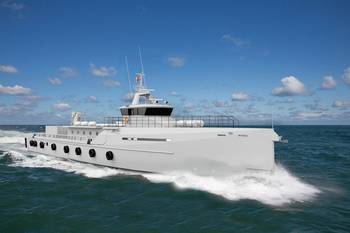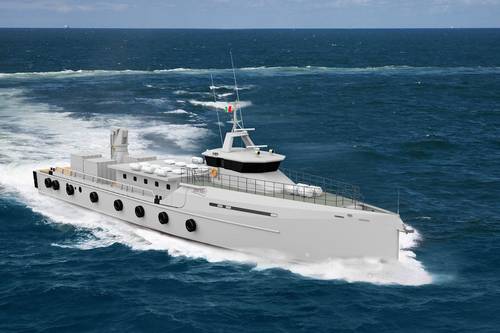US-Mexico border crime takes center stage in ‘The Bridge’
By Agence France-Presse
Sunday, August 3, 2014 9:16 EDT
Murder,
corruption and all sorts of sleazy behavior are found on both sides of
the US-Mexico border in the US TV drama “The Bridge,” which focuses on
an American and a Mexican detective trying to solve bi-national crimes.
The series, which just began its second season in the United States,
Latin America and Spain, opened in July 2013 with the gruesome discovery
of a woman’s mutilated body placed in the middle of one of the busy
bridges over the Rio Grande that links El Paso, Texas and Ciudad Juarez,
Mexico.
The teeming urban sprawl of about 2 million people — some 1.4 million
in Ciudad Juarez and about 600,000 in El Paso — is one city with deep
historical, cultural and family ties divided by an international border.
In
the show, Ciudad Juarez police detective Marco Ruiz, played by leading
Mexican actor Demian Bichir and his Texas counterpart Sonya Cross,
played by German actress Diane Kruger, work together to attempt to solve
baffling serial killings that have suspects and leads on both sides of
the border.
As the investigation unfolds, issues of drug trafficking, human
smuggling, bribery and abuse of power in the United States and Mexico,
inspired by real-life cases ripped from the headlines, are dealt with in
the show.
“Here we talk of all the problems that two countries so different as
the United States and Mexico share, but in a fictional setting,” Bichir
told AFP in an interview.
The series “does not treat one country as good and the other as bad.
That’s one of the things that keeps the viewer’s attention,” said
Bichir, nominated for an Oscar for his lead role in the 2011 Chris Weitz
movie “A Better Life.”
- Drug wars, illegal immigration -
“The Bridge” is a remake of the 2011 Swedish-Danish TV series
“Bron/Broen” adapted to the busy 2,000-mile (3,200-kilometer) US-Mexico
border, legally crossed by one million people a day.
The show includes episodes that touch on the turf wars between
Mexican drug cartels to control lucrative smuggling routes into the
United States — the world’s largest illicit drug market — and the
influence of the cartels on the northern side of the border.
It also addresses the illegal immigration of Mexicans and Central
Americans, many of whom are robbed, abused, raped and sometimes murdered
by criminal gangs before they even attempt to sneak into the United
States.
In this context of rampant, out-of-control violence, Detective Ruiz
faces endless obstacles, not only having to deal with the shocking
cruelty of some of the crimes, but also the corruption of his own police
colleagues.
In El Paso Detective Cross, who has Asperger syndrome and can be
brusque and tactless, struggles to enforce US law even while she has a
jaded, often uninterested supervisor.
The series “puts the finger on the sore” of the most controversial
issues affecting both countries thanks to the honesty of the two lead
characters, Bichir said.
- US-Mexican ‘marriage’–
“The Bridge” has found the right formula to bring Americans closer to
what is happening in its southern border, “touching fundamental issues
to open eyes and allowing viewers to reflect through emotions,” said
Demian’s brother Bruno Bichir, who in the series portrays a dark
character named Sebastian Cerisola.
“The most important thing is to realize, through this fiction, that
Mexico and the United States are in a marriage and that we have a border
that we must care for together,” he said.
Americans appear to be increasingly concerned about the southern
border, especially with violence linked to the drug trade and the flood
of illegal migration.
The show’s first season had some 3.3 million viewers in the United
States, and some 14,000 followers on Twitter. The series airs on the FX
network, part of the Fox Entertainment Group, and there has been no
confirmation yet of a third season.
Demian Bichir hopes that “The Bridge” will take a closer look at the issue of migration to the United States.
“We have to talk about the origin of this massive exodus of children
that has arrived at the border,” he said, in reference to the more than
57,000 minors, mostly from Central America, who have illegally crossed
into the United States since October.
“It would be worthwhile if ‘The Bridge’ has the time to tell the
history of this humanitarian crisis, and that it takes the time to put a
face on the 12 million undocumented people living their daily lives in
the United States,” he said.
















